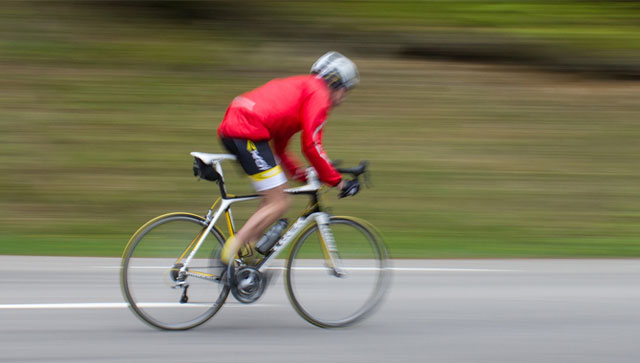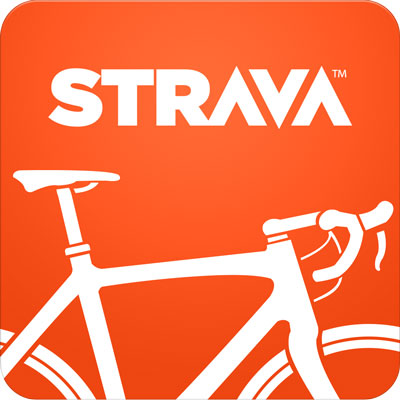
I used to cycle for fun. Muddy bumps on rutted forest trails were exhilarating — and I got enough scratches to convince women that I was very manly. But then I moved to the seemingly all-concrete surroundings of suburban Johannesburg. My car took me where I needed to go — a boring state of affairs, but safe.
Every weekend I would drive past the hordes of cyclists going up and down Jo’burg’s tar roads, and then suddenly veering off to zip down seemingly hidden trails in the bush. I yearned to join them.
Being a child of the digital age, the first thing I did was to find some cycling apps. Then I found a bike on a trusted website and bought it.
The next day, before I had pumped up the tyres properly or checked to make sure the bike would stop, I was out to test the apps. I had narrowed down the list, so dutifully started both finalists and rumbled off down the road to see which one was shiniest.
The winner, Strava, has turned me into an addicted and suicidal cyclist in just a month. It is simple enough, recording your progress with GPS and giving a map of where you rode. This information can then be broken down into how fast you were going at certain points, and how pitifully few calories were burnt (an hour of riding can be undone by a bite of a bar of chocolate).
Where Strava comes into its own is in the community. Seven hundred other riders are regulars on my local route — a 20km loop along one of the many beautiful streams that wind their way through suburbia. First, this means that someone else has explored the interesting places to go. All you have to do is search locally and you know exactly where to go. And so many people use these routes that they have been adapted with special ramps and little challenges for the kids at heart.
Second, this means you have a virtual community of opponents. Each part of every course is broken down into shorter segments, and as you cycle along your time is posted to the board. If cyclists were functional people, this would be a great way of tracking your own progress and how fit you are.
But they are not. Strava has created a community of people pushing every corner and dodging wandering dogs in order to squeeze a few extra seconds off their time.
The app, designed in California by a former rower who still wanted the camaraderie of competition, now has a million users. Its “success” is measured in the number of lawsuits by the families of cyclists who have lost their lives chasing the fastest times.
The brilliance is that Strava taps into that desire to compete that we can’t fulfil sitting at a desk. On freezing mornings I have chosen the biting wind rather than lying in a warm bed, because I can’t stop thinking of where I could possibly go faster.
A few weeks ago, when I took leave, I took my bike with me to my hometown in Limpopo because I couldn’t bear the thought of not being able to add kilometres to Strava. One route available on the app was an ambitious 60km ride through the forested mountains around town. It was a bit hot for that so I settled on a short sprint around the new shopping centre. The best time was 2:10, or the best part of a song. I tried the loop twice and could only match the best time. Two cyclists had done the exact same time with all the variables. How annoying.
Downhill
I rode home feeling a tad dejected, a mood that didn’t pass as I sat on the couch. The app was calling and it was getting dark but I needed to achieve something that day. I chose speed, so I went to the highest point in my neighbourhood and sped downhill. I hit 68km/h, only realising that my back brake had broken when I was near the bottom.
The problem is that this is as fast as I think my bike can safely go. But now the app has recorded it and I need to beat that speed. And someone might decide to challenge me on that downhill — the app alerts you when your time is broken if you are fastest over a section. If you are fastest, you get the coveted title of “King of the Mountain” (KoM), a term pinched from the Tour de France.
Back in my part of Johannesburg, the KoM has set crazy times, doubling whatever speed and pace I can do even if I turn off the safety switch in my brain.

In this year’s Tour, the official KoM was undoubtedly Chris Froome. But when he smashed his opposition in the climb up Mont Ventoux, it was a man two minutes behind him who was the virtual KoM — Laurens ten Dam uploaded his time to Strava, which put him ahead of the 4 000 other cyclists who had tried the ascent with the app.
Strava means strive in Swedish, and it’s appropriate, so much so that it has brought out the dark side in people. There is a website for performance enhancement, where your times can be gently massaged to make you look faster than you were.
There are also easier ways to cheat — the GPS can be confused if you speed along the tar road next to a dirt course. There is also a furore about Lance Armstrong using Strava. He is KoM on 50 sections but the community has said he should be banned, as he has been from professional cycling. The makers have refused, saying they are not there to police people.
The app has also, allegedly, led to people dying. It now comes with numerous warnings after a widow sued the developers. She said her husband crashed and died trying to beat the best time on a segment. Another cyclist has been convicted of murder after killing a pedestrian while striving for more speed.
These are all the teething problems of something new but it has grown so much that the verb to cycle has almost been replaced by “to strava” in conversation. I vaguely remember cycling for fun. Now I strava. — (c) 2013 Mail & Guardian
- Visit the Mail & Guardian Online, the smart news source

